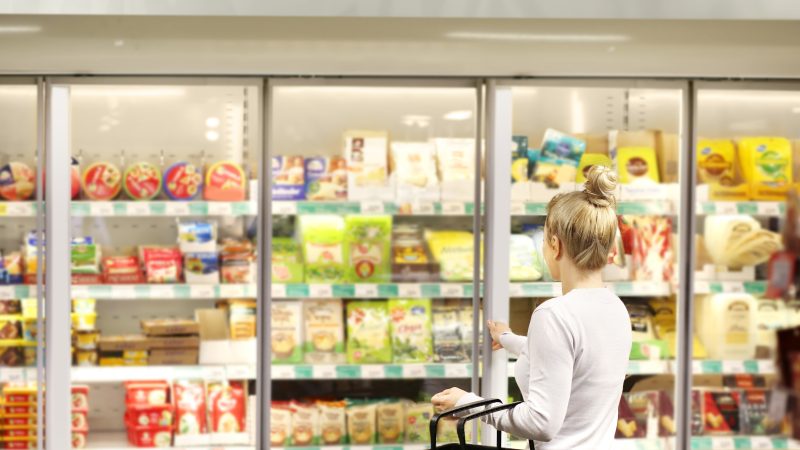COVID-19 accelerates technological change in the global supply chain

The COVID-19 pandemic is accelerating pre-existing demand for the technology-enabled transformation of the global supply chain industry, says Paul Cuatrecasas, CEO of Aquaa Partners and Author of Go Tech or Go Extinct.
Demand for change in the global supply chain industry is not new. The ongoing US-China trade war has already prompted businesses in the US to diversify their supplier base away from China. A recent report by global consultancy, Kearney, estimates that as a result of diversification manufacturing import ratios (MIR) between the two countries have been pushed to 98 per cent in 2019, an unprecedented level, and up from -32 per cent the year before. (A positive figure indicates net reshoring and a negative figure indicates an increase in offshoring).
Impetus for change among developed nations is being driven by other factors, too. A desire to mitigate disruption risk generally, cost savings, greater output agility and closer proximity to centres of demand. COVID-19 has only served to further expose the frailty of the global supply chain and turbo charge demand for change. A recent ongoing survey of 50 CFOs from Fortune 1000 companies found that one-third of the companies listed supply-chain issues as a top-three concern for dangers facing their businesses.
Delivering the redrawing of the global distribution network required, however, takes time and relies upon technological innovation and implementation often through the acquisition of tech disruptors by established industry players.
Warehouse Automation
Just-in-time delivery has been adopted as an effective way to maintain optimum production while also reducing costs. With its reliance on manual workers, however, the pandemic has exposed it as a weak link in the supply chain.
To address this vulnerability there is an added drive toward automation. Warehouse management systems matched with developments in Artificial Intelligence (AI), for example, are helping to optimise warehouse functionality and distribution, while also reducing the number of employees required. Even before the outbreak of coronavirus research firm Markets & Markets expected the warehouse systems market (WSM) to explode to USD 4.82 billion by 2024 up from USD 2.06 billion in 2018.
Falling costs and longer lifespans mean robotics is another rapidly growing industry transforming not just the manufacture of goods, but also their management and distribution. The use of robotics in warehouse management for the movement of goods is already common. Research firm Facts and Factors predicts the global autonomous forklifts market alone will reach a value of around USD 10.5 billion by 2025 up from USD 6.5 billion in 2018.
Autonomous Distribution
Advancements in drone and vehicle technology are also enabling businesses to bolster resilience and reduce their dependency on labour by automating the distribution of goods from the warehouse to the consumer.
ARK Investment Management in a study estimates parcel drones have the capacity to deliver packages profitably in under 30 minutes for as little as $0.25 compared to over $7 for traditional domestic shipping. The study also estimates that, as a result of frictionless and inexpensive delivery, consumers are likely to purchase significantly more goods online, growing ecommerce’s share of retail sales from 14 per cent in 2019 to an estimated 60 per cent in 2030 with drones delivering more than half of the ecommerce volumes.
It’s anticipated that over a timespan of 15 to 20 years most aspects of the supply network will be automated. Autonomous robots will collect goods from the factory depositing them to an automated distribution facility. An autonomous vehicle or drone will then collect these goods and deliver them autonomously to their destination. The low cost of drone delivery also provides manufacturers with the ability to begin circumventing the warehouse entirely and deliver goods direct from the factory to the door, thus cutting out a key element of the traditional supply chain completely.
3D Printing
Perhaps more than any other area, the rapid expansion of 3D printing is revolutionising the manufacture and production of goods. Due to their reduced labour costs, 3D printing offers producers greater capacity to make goods cheaply, efficiently, and much closer to market. There implications are seismic. They represent the prospect of major service-led economies, such as the United Kingdom, Unites States and Canada reclaiming their manufacturing base. The industry is already booming. Last year, the global additive manufacturing market grew to over $10 billion for the first time.
Autonomous Shipping
Together, 3D printing and drone technology will, over the coming decade, begin to have a significant impact on the global maritime cargo industry.
3D printing will see supply lines reduced and demand for long-distance maritime shipping fall. In the longer term, advances in autonomous cargo drone technology are likely to see the sector begin to compete with short to medium range maritime freight in terms of cost.
To adapt, the maritime cargo industry will also need to embrace innovation to reduce costs and bolster resilience. Even before the outbreak of the pandemic, investment in the autonomous shipping market was expected to grow from USD 90 billion today to over USD 130 billion by 2030. Coronavirus is likely to trigger an acceleration in that investment. At present, autonomous ships are little more than automated robots, but developments in AI offers the capacity for enhanced decision-making and greater efficiency.
Long-term trend
COVID-19 represents the greatest single short-term disruption to the global economy since the Second World War. History teaches us that times of crisis often drive innovation. Coronavirus is no different.
Technological innovation to redraw the global supply chain was already underway. Coronovirus has simply led to an acceleration in that rate of change. The challenge now falls on industry to embrace and adapt to it.







